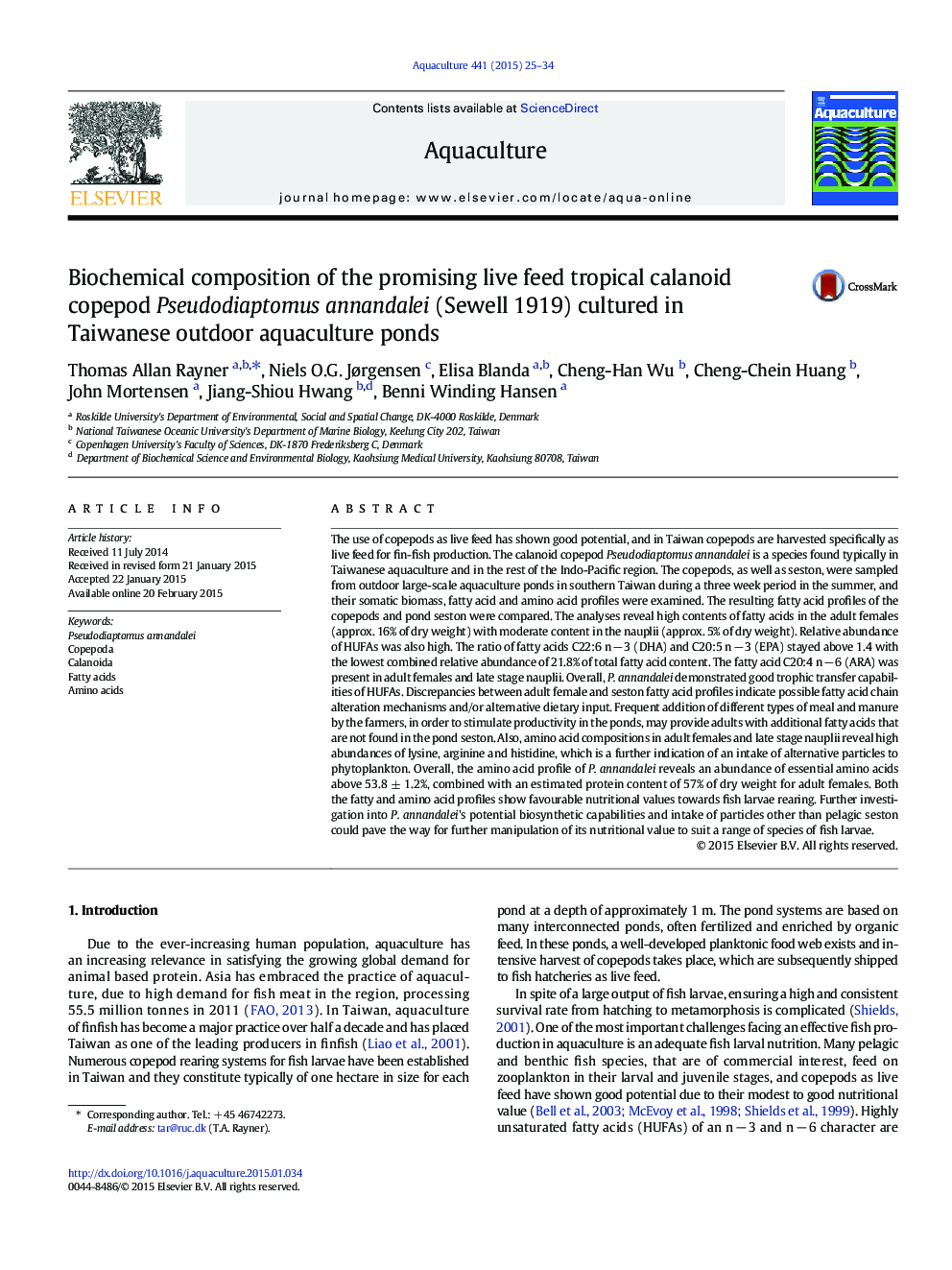| Article ID | Journal | Published Year | Pages | File Type |
|---|---|---|---|---|
| 2421541 | Aquaculture | 2015 | 10 Pages |
•This study reports on a tropical egg carrying calanoid copepod Pseudodiaptomus annandalei produced in open ponds.•The copepod species Pseudodiaptomus annandalei is used directly as feed for e.g. grouper larvae in Taiwanese hatcheries.•First time a comprehensive analysis of carbon, nitrogen, fatty acids and amino acids content of this species are reported.•Trophic upgrading from pond seston, and possible anthropogenic particles, are discussed.•The potential use of the species is evident and strategies for further improving it as live feed are proposed.
The use of copepods as live feed has shown good potential, and in Taiwan copepods are harvested specifically as live feed for fin-fish production. The calanoid copepod Pseudodiaptomus annandalei is a species found typically in Taiwanese aquaculture and in the rest of the Indo-Pacific region. The copepods, as well as seston, were sampled from outdoor large-scale aquaculture ponds in southern Taiwan during a three week period in the summer, and their somatic biomass, fatty acid and amino acid profiles were examined. The resulting fatty acid profiles of the copepods and pond seston were compared. The analyses reveal high contents of fatty acids in the adult females (approx. 16% of dry weight) with moderate content in the nauplii (approx. 5% of dry weight). Relative abundance of HUFAs was also high. The ratio of fatty acids C22:6 n − 3 (DHA) and C20:5 n − 3 (EPA) stayed above 1.4 with the lowest combined relative abundance of 21.8% of total fatty acid content. The fatty acid C20:4 n − 6 (ARA) was present in adult females and late stage nauplii. Overall, P. annandalei demonstrated good trophic transfer capabilities of HUFAs. Discrepancies between adult female and seston fatty acid profiles indicate possible fatty acid chain alteration mechanisms and/or alternative dietary input. Frequent addition of different types of meal and manure by the farmers, in order to stimulate productivity in the ponds, may provide adults with additional fatty acids that are not found in the pond seston. Also, amino acid compositions in adult females and late stage nauplii reveal high abundances of lysine, arginine and histidine, which is a further indication of an intake of alternative particles to phytoplankton. Overall, the amino acid profile of P. annandalei reveals an abundance of essential amino acids above 53.8 ± 1.2%, combined with an estimated protein content of 57% of dry weight for adult females. Both the fatty and amino acid profiles show favourable nutritional values towards fish larvae rearing. Further investigation into P. annandalei's potential biosynthetic capabilities and intake of particles other than pelagic seston could pave the way for further manipulation of its nutritional value to suit a range of species of fish larvae.
